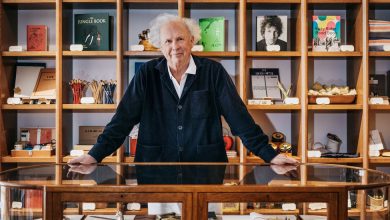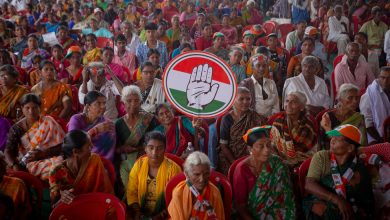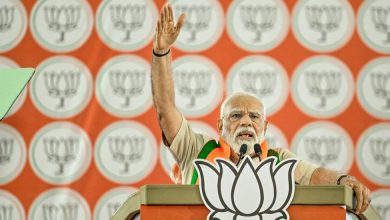While Canada Welcomes Refugees, Its Door Is Far From Wide Open


By Ian Austen
By Friday afternoon, one million people had fled Ukraine, mostly to neighboring countries, according to estimates from the U.N. refugee agency, U.N.H.C.R. As with other recent wars, resettlement groups in Canada are preparing to receive many of those who are expected to land here.
The prospect of a wave of Ukrainian refugees comes when Canada is still far short of fulfilling its plan to admit 40,000 asylum seekers from Afghanistan, a delay that has prompted criticism. But Canada’s large population of people with Ukrainian heritage has created a welcoming committee. Its numbers include many politicians, not least of them Chrystia Freeland, the deputy prime minister, who studied in Ukraine and who speaks Ukrainian with her three children at home.
But what, exactly, will Canada do, and perhaps more important, what should Canada do in the face of this humanitarian crisis?
To start with, Rema Jamous Imseis, the representative in Canada of the U.N. refugee agency, who advocates refugee resettlement, told me that Canadians should not expect, in the near future, to see large numbers of people turning up here to stay.
“When people are forcibly driven from their homes, most of them actually want to return, so they are staying close to home,” she said. “They’ve left behind fathers, brothers, husbands, sons who are all now actively involved in the military activity.” The most effective thing Canadians can do for displaced Ukrainians right now, she said, is to support humanitarian relief efforts. “It is too early to be talking about resettlement, but it’s not too early for solidarity,” she said.
This week, the government of Canada pledged 100 million Canadian dollars to help not just Ukrainians who have fled but also those who remain trapped in the country.

Ukrainian refugees on Friday in Przemysl, Poland.Credit…Erin Schaff/The New York Times
Also this week, Prime Minister Justin Trudeau made it easier for Ukrainians to come to Canada, although in a way that fell short of what some people had been seeking and which was not a full resettlement program. Essentially, Canada eliminated many visa requirements for Ukrainians and lifted limits on how many of them can apply for visas. Once here, they will be able to apply for work permits through a special system.
Some refugee groups, however, had asked the government to follow the lead of many European countries in the crisis and simply open the border for Ukrainians, allowing them to come to Canada without a visa.
Randall Hansen, a political scientist at the University of Toronto who studies global migration, told me that dropping visas would have represented a dramatic shift in Canadian immigration policy. While Canada admits a large of immigrants in all categories, “all immigration is checked, controlled, managed,” Professor Hansen said.
The result, he said, is that Canada often gets more credit for welcoming immigrants and refugees than statistics suggest it deserves. Mr. Trudeau, he noted, received global attention for his program that, in relatively short order, admitted about 51,000 refugees from Syria. “Then the door slammed immediately shut,” he said.
He contrasted Canada’s Syrian program with that of Germany, where about 1.2 million refugees were admitted under a system with relatively few controls.
“These sort of gestures that created the impression that in the world that you could put Germany and Canada in a box and pull out either one and it wouldn’t matter which you chose — they were both equally liberal,” he said. “It’s just absurd.”
Geography, he said, has been the key to allowing Canada to control who enters. The only place people can reach the country from by foot, the United States, is the destination of choice for most immigrants and most refugees who are ready for resettlement, Professor Hansen said. So people who reach Canada generally board an airplane with a valid visa, an impossibility for the world’s most desperate refugees, he added.
“Why do they want to keep visas?” Professor Hansen asked. “They are fundamental to this control paradigm. It means that only the educated, the skilled, wealthy people can get on a plane for another reason and then claim asylum when they can get here.”
Trans Canada
-
A new, highly mutated version of the coronavirus has been found in white-tailed deer in southwestern Ontario. There are signs of possible deer-to-human transmission, but there is no evidence that the new lineage poses an elevated risk to people.
-
Forty-seven people in Canada have been arrested as part of an international law enforcement collaboration that also resulted in the rescuing of dozens of children and exposed a secret global network used to share material on sexual abuse.
-
Canada has approved a second vaccine that is made without mRNA technology, providing an alternative for people who remain concerned about the technology, despite substantial evidence indicating that they are safe.
-
The International Real Estate column looks at a seaside house near Lunenburg, Nova Scotia.
-
Unlike the protest in Ottawa that inspired it, a blockade opposing pandemic measures in Wellington, New Zealand, came to a chaotic, sometimes bloody and fiery end as protesters battled the police.
A native of Windsor, Ontario, Ian Austen was educated in Toronto, lives in Ottawa and has reported about Canada for The New York Times for the past 16 years. Follow him on Twitter at @ianrausten.
How are we doing?
We’re eager to have your thoughts about this newsletter and events in Canada in general. Please send them to [email protected].
Like this email?
Forward it to your friends, and let them know they can sign up here.




